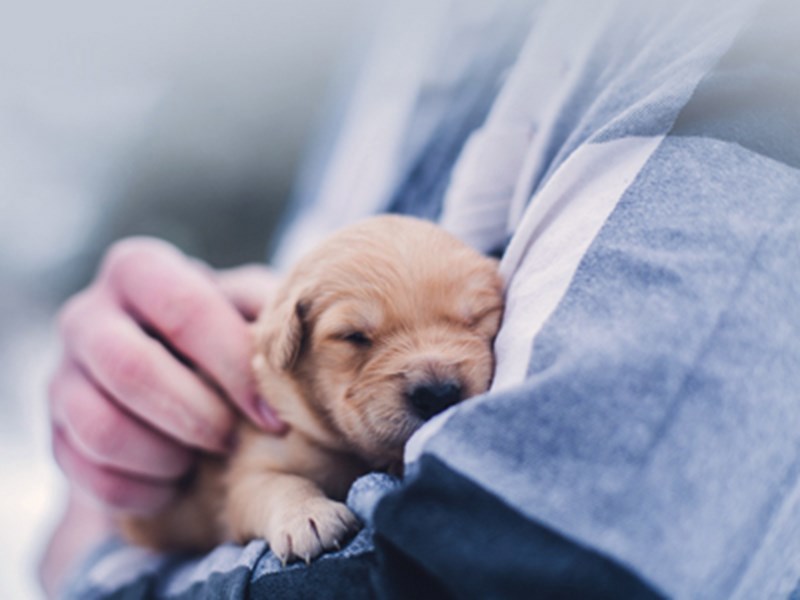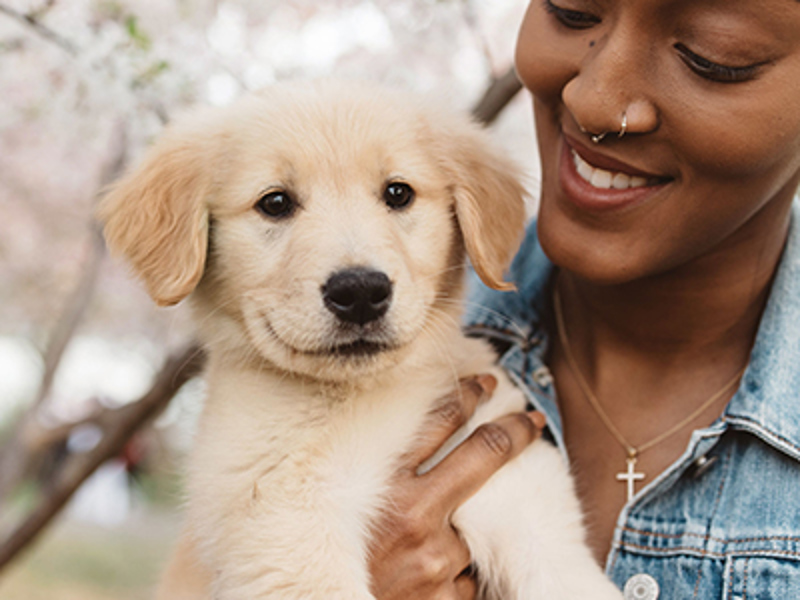
Border Terrier
Breed characteristics
- Size
- Small
- Exercise
- Up to 1 hour per day
- Size of home
- Flat/ Apartment
- Grooming
- More than once a week
- Coat length
- Short
- Sheds
- Yes
- Lifespan
- Over 12 years
- Vulnerable native breed
- No
- Town or country
- Either
- Size of garden
- Small/ medium garden
About this breed
“Essentially a working terrier” says the standard and the breed remains so, hugely popular in the country for his gameness, but adapting also to family life in the town and city. The borders of Northumberland and Scotland gave the breed its name around 1880 after he was used as the earth dog with the Border Foxhounds. He had also earned the local names of the Reedwater Terrier and the Coquetdale Terrier.
Images for this breed
The Terrier breed group
Dogs originally bred and used for hunting vermin. 'Terrier' comes from the Latin word Terra, meaning earth. This hardy collection of dogs were selectively bred to be extremely brave and tough, and to pursue fox, badger, rat and otter (to name but a few) above and below ground. Dogs of terrier type have been known here since ancient times, and as early as the Middle Ages, these game breeds were portrayed by writers and painters.
Colour Watch
Category 0: Breeds with no NBS colour registration options.
Read more about Colour Watch.
Breed Standard colours
Breed standard colour means that the colour is accepted within the breed standard and is a traditional and well-known colour in this breed.
Breed standard colours in this breed include:
- Blue & Tan
- Dark Grizzle
- Dark Grizzle & Tan
- Dark Red Grizzle
- Grizzle
- Grizzle & Tan
- Light Grizzle
- Red
- Red Grizzle
- Wheaten
Other colour/s
'Other' means you consider your puppy to be a colour not currently known within the breed and one that does not appear on either the breed standard or non-breed standard list. In this instance you would be directed through our registrations process to contact a breed club and/or council to support you on identifying and correctly listing the new colour.
Non-breed-standard colours
Non-breed-standard colour means that the colour is not accepted within the breed standard and whilst some dogs within the breed may be this colour it is advised to only select a dog that fits within the breed standards for all points.
Colour is only one consideration when picking a breed or individual dog, health and temperament should always be a priority over colour.
Health
Whether you're considering buying a Border Terrier puppy or breeding from your dog, it's important to understand the health issues that may affect the breed and how they can be managed or avoided.
Pre-breeding Health Screening
Best Practice schemes and tests
These tests address conditions that are still significant for the breed, though they might be less common or newly identified, and research is ongoing to determine their full impact
To support the breed’s health, responsible breeders should ensure they complete all tests in best practice.
- DNA test for spongiform leucoencephalomyelopathy (SLEM) - Find a list of tested dogs here
- Hip testing (for hip dysplasia) using the BVA/KC Hip Dysplasia Scheme
Find out about a particular dog's results
Please visit our Health Test Results Finder to discover the DNA or screening scheme test results for any dog on The Kennel Club's Breed or Activity Register.
You can also view the inbreeding coefficient calculation for a puppy's parents, or for a dog you're thinking of breeding from.
DNA Testing Services
We don’t currently offer a breed-specific DNA testing package for this breed, but we have a wide selection of individual DNA tests available. To find out more and view our full selection, click here
Breed Health & Conservation Plan
The Breed Health and Conservation Plans
Our breed health and conservation plans (BHCPs) use evidence and data to help us understand the health issues found in each pedigree dog breed. These plans help breeders and owners identify health and welfare problems and use information, health tests and health schemes to avoid passing on those problems to future puppies. They also support and provide breeders with tools and specialist expertise to help manage genetic diversity, understand the impacts of close breeding, and find the best ways to preserve the population of their breed.
Working together for the breed
We’ve worked with breed clubs and breed representatives to gather all available evidence to help us determine the priority concerns for the breed and decide how we can work together to manage and reduce these problems.
Breed priorities
The current key priorities for the breed are:
- Spongiform leucoencephalomyelopathy (SLEM)/ shaking puppy syndrome
- Canine epileptoid cramping syndrome (CECS)/ paroxysmal gluten-sensitive dyskinesia (PGSD)
- Gall bladder mucocele
- Cushing’s disease
- Genetic diversity
How we plan to make improvements
We’ve agreed the following list of actions with the breed clubs to improve the health of the breed. Both parties are committed to working on these areas and will review these on a regular basis to ensure the actions remain focussed and relevant to the breed’s health.
Breed Club actions include:
- The breed clubs have put in a request to make SLEM a recommendation under the Assured Breeder Scheme. – COMPLETE (this action was completed in 2018)
- The breed clubs to develop a gall bladder mucocoele open register. (the Breed Health Co-ordinator is currently developing this, which will be available on the Border Terrier Health website. The breed are also working to store samples for cases, which are hoped to be held at the Kennel Club Genetics Centre)
- The breed clubs to develop a Cushing’s disease open register. – COMPLETE (this action was completed in 2019 and the open register is available on the Border Terrier Health website)
- The breed clubs to encourage participation in any relevant epilepsy research. – ONGOING
Our actions include:
- To investigate the possibility of developing an optimum contribution tool. – IN PROGRESS
- To enquire on the progress of CECS research. – COMPLETE (this action was completed in 2019, with the breed working with Dr Mark Lowrie at the University of Cambridge. Details of the disease and research can be found on the Border Terrier Health website)
- To investigate if there is to be a Cushing’s disease VetCompass paper. – COMPLETE (this action was completed in 2017 and a Border Terrier paper was published by the VetCompass research group in 2017)
- To provide a link to the Border Terrier health website on the Border Terrier page of the Kennel Club website. – COMPLETE (this action was completed in 2021)
The full evidence base is available at the discretion of the breed clubs, however if you would like to seek access to the full report, please contact our health team here.
Health (The Kennel Club)
How do I use this information?
Breeders should be mindful of the top priorities in their breed and ensure they are working to reduce and eliminate the presence of these diseases when choosing to breed their dogs.
Puppy buyers should also be aware of these issues and be sure to ask their breeder how they are contributing towards the above actions, and whether any of these problems have been seen in their breeding lines.
More about health
Have any questions about health in your breed?
If you have any concerns about a particular health condition in your breed then you may wish to speak to your vet or you could contact your breed health co-ordinator.
Breed health co-ordinators are individuals working on behalf of breed clubs and councils who are advocates for the health and welfare of their chosen breed. They acts as a spokesperson on matters of health and will collaborate with The Kennel Club on any health concerns the breed may have.
To contact your breed health co-ordinator please email
Breed watch
Category 1
Currently no points of concern specific to this breed have been identified for special attention by judges, other than those covered routinely by The Kennel Club's breed standard.
Breeding restrictions
There are a number of The Kennel Club's rules and regulations that may prevent a litter from being registered, find out about our general and breed specific breeding restrictions below.
More about breeding
There are not currently any additional breed specific restrictions in place for this breed.
Looking for a puppy?
Looking for a Border Terrier? Explore our list of puppies and rescue dogs for sale near you.
More information

Need to find out more about a breed?
Use our Find a Club service where you can locate breed clubs that can offer support and advice.

Use our Find a Puppy service
The Kennel Club's Find a Puppy service provides contact details for breeders who have puppies available. Let's help you find your new best friend.

Get the best lifetime pet insurance
At Kennel Club Pet Insurance, we want you to focus on getting the best possible treatment for your dog without worrying about the cost.
